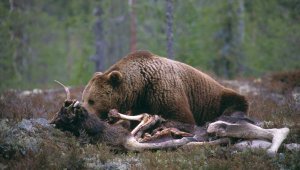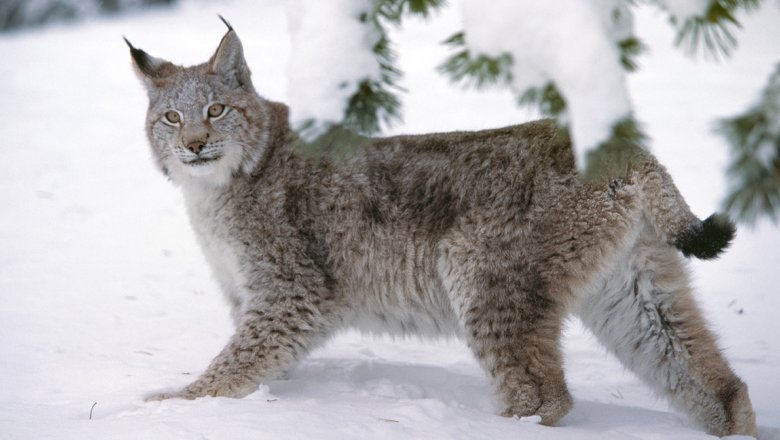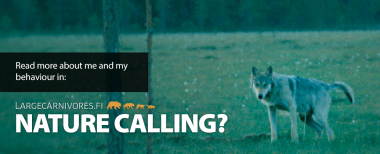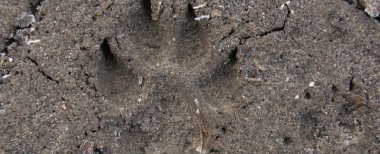The Management Plan for the Lynx Population is composed of three sets of measures: profound and expanding knowledge on the lynx population, population management measures, and acceptability of lynx and its population management. The management plan includes 45 measures in total.
The objective in the management of the lynx population is to maintain the population at a favourable conservation status and to continue to implement the measures that have proven effective. What the management plan is essentially about is reconciling the coexistence of lynx and local people and stakeholders.
Under the Habitats Directive, lynx is a strictly protected species, but it can be found in all parts of Finland. For the most part people’s views regarding lynx are either neutral or positive, and for hunters it is a highly valued game animal species. Lynx is being hunted every year by virtue of special permits for population management purposes. In Finland the trends in the lynx population have followed the regulation concerning lynx quite closely.
In the 1930s and 1940s lynx was believed to have disappeared as a result of hunting. Partial protection of lynx entered into force in 1962. (Pulliainen & Rautiainen 1999) Annual lynx population estimates have been made since 1978, when the population was estimated to be 107 individuals. By 1990 the number of lynx had increased to about 700 individuals. The population stayed at about this level all through the 1990s and started to grow more strongly around the year 2000. (Management Plan for the Lynx Population in Finland - Background document.) Finland joined the EU in January 1995, meaning that the strict conservation requirements concerning lynx in the Habitats Directive had to be incorporated into our national legislation as well. The first population management plans for large carnivores were adopted during the first decade of the 2000s. The processes to prepare the plans were coordinated and led by the Ministry of Agriculture and Forestry.
The Finnish lynx population has grown since 2006, when the previous management plan was adopted. Around that time, in 2005, the estimate for the minimum population size was 1,100 to 1,200 individuals (Kojola et al. 2006). According to the population estimate published in 2021, before the hunting season 2021/2022 the number of lynx over the age of one year was estimated to be 2,155 to 2,280 (Holmala et al. 2021). The lynx population was at a favourable conservation status already when the previous management plan was published, and this is still the case. In the most recent assessment of the threat status of Finnish species lynx was removed from the Red List and included in the category ‘Least Concern’.
Finland divided into two main areas for lynx population management
In terms of managing the lynx population, Finland is divided into two main areas: the reindeer herding area and the rest of Finland. In the reindeer herding area the number of lynx is relatively low, but the population is abundant in the other parts of Finland. The areas differ from each other in certain other respects as well. There are differences between the areas concerning e.g. the ecological conditions with respect to lynx, accuracy of the population estimates, key population management methods, and damages caused by lynx in terms of both the species affected and the numbers of damages.
In the reindeer herding area lynx may cause significant financial losses to reindeer husbandry. This is why in the reindeer herding area the focus is on reducing damages through derogations that are based on the damages caused and population management purposes.
In the rest of Finland the lynx population, even if quite abundant, does not have similar negative impacts on people’s livelihoods as it does in the reindeer herding area. Hunting for population management purposes aims to maintain the lynx population at its current status in the other parts of Finland. The objective of hunting to manage the population described in the Management Plan for the Lynx Population is to maintain a viable population that is at a favourable conservation status on the national scale, minimise the harm caused by the presence of lynx and ensure that lynx do not lose their fear of humans.
The measures in the management plan also cover the monitoring and study of the lynx population, preventing damages caused by lynx and compensating for these, and communication. The main responsibility for the implementation of the Management Plan for the Lynx Population in Finland rests with the Finnish Wildlife Agency, Natural Resources Institute Finland and Ministry of Agriculture and Forestry.
Management Plan for the Lynx Population in Finland (PDF 478 KB Link)





